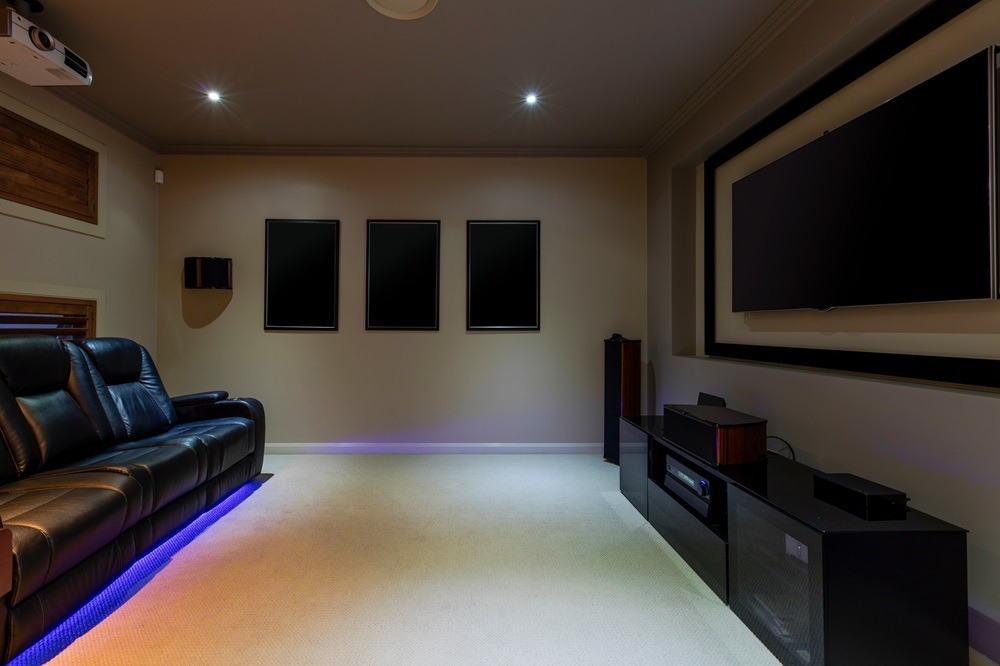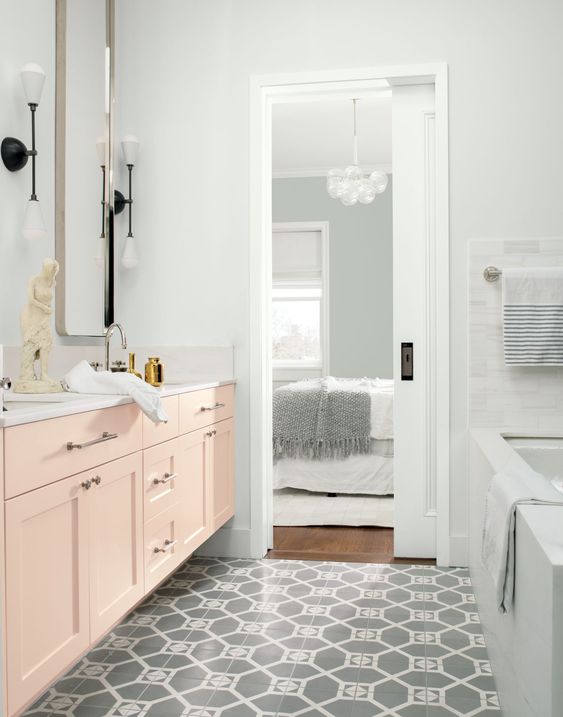The perfect media room has more than just the right technology; the room’s vibe and environment are just as important. One part of these rooms that has a huge effect on your viewing experience is the room’s paint color. The best paint color for media room can improve the viewing experience in several ways like boosting screen contrast, reducing glare, and setting the proper mood. In this guide, we’ll explore the best paint colors for media room, taking factors such as light reflection, overall vibe, and the look of the complete room into account.
Picking the best paint color for your media room is an important part of maintaining an unforgettable viewing experience, since the right color choices and combinations not only enhance screen contrast but also set the vibe of the room. You can make your media room the ultimate entertainment hub by thinking about some of these media room paint ideas.
Why Dark Colors are Preferred
Some of the best paint colors for media rooms include things like black, dark gray, navy blue, and burgundy. These colors make great media room paint ideas because they absorb light. Absorbing light like this reduces reflections and enhances color contrast on the screen, making it an important part of creating the theater-like ambiance. Dark colors also direct all attention to the screen, which makes them great for viewing shows or movies in high quality. Additionally, dark walls make a room feel cozier and more intimate, which is perfect for enjoying a film or a game night with your loved ones.
Using dark colors also aligns with the energy-efficiency trend. One great example of this is how dark colors also work well in other home improvement projects such as enhancing your home with a sunroom. While a sunroom and a media room are for completely different things, both rooms can use from darker colors that boost comfort and energy-efficiency.
Benefits of Matte Finishes
In a media room, you should always choose a matte finish instead of a glossy one. Glossy finishes reflect more light, which can diminish the viewing experience. Matte finishes, on the other hand, absorb light and reduce glare so you and your loved ones can maintain your focus on the screen. Absorbing light and reducing glare like this also goes a long way to improve the clarity of the screen, which is important when viewing movies or playing games, making matte paint for the media room doubly important. Using matte finishes in your media room lets you keep the screen as the centerpiece and center of attention in the room, this way, you can enjoy your viewing experience that much more.
Sherwin-Williams has a wide variety of great examples of matte finish paints that can absorb light and reduce glare, making matte finish an important aspect of the best paint colors for a media room. Choosing a quality matte paint will improve the viewing experience and overall comfort of your media room.
Ceiling and Additional Room Elements
Your media room’s ceiling color can also have an effect on your viewing experience. Paint the ceiling a dark color like black or dark gray, to keep light from moving around the room so viewers can keep their focus on the screen. If you want a lighter color, go for a very light gray or matte white to prevent unnecessary glare. Ideally, the ceiling color should match or pair well with the wall color to make the room look put-together and immerse viewers in the movie experience.
Think about adding extra elements like acoustic panels and carpets to boost sound quality and comfort. Acoustic panels can absorb sound and prevent it from moving around the room, which goes a long way to keeping the sound experience top notch. Carpets and rugs also muffle sound and reduce echo, boosting the comfort level of the room. When you address both visuals and sound, you make your media room deliver the complete package of a viewing experience.
Colors to Avoid
Try to avoid bright colors like yellow, blue, or pink in your media room. Many people find aggressive colors like this distracting, which is the opposite of what you want in a media room. When they’re too distracting, these colors can take away from the colors on the TV or projector screen. Additionally, avoid reflective paint in media room, as paints like this cause unwanted reflections and distractions from the screen, which interferes with the viewing experience, making it harder to enjoy the content.
More neutral colors make some of the best paint colors for media rooms because they keep the colors on the screen accurate. You can achieve the best possible viewing experience with media room paint ideas that include mid-tones to dark shades of gray or brown. Black is also a good choice if you want the room to feel like a real movie theater, but it can make the room seem smaller than it really is. Avoid reflective paint in a media room when making your paint choices. This way, you prevent your walls from reflecting light so you can be sure the screen is the main focus of the room. .
Versatile Color Options
Versatile colors like burgundy and dark brown make great examples of media room paint ideas, especially for multi-purpose media rooms. These colors both absorb light and allow you to showcase your own taste and style in the room. Versatile options like this have both visual appeal and a purpose that they serve, so they’re great for several forms of media room entertainment like gaming, watching movies, and social gatherings.
Colors like burgundy and dark brown are especially great for creating a warm and inviting atmosphere, which is perfect for entertaining guests. These colors balance providing a stellar movie experience with keeping the environment cozy and welcoming to guests. Versatility like this is also great for adapting home improvement projects to new needs, such as those that emerged post-COVID-19. As homes have gained many new functions, making sure your media room can serve several purposes is more important than ever before.
The Best Paint Colors for a Media Room
Finding the best paint color for your media room involves thinking about aspects like light absorption, glare reduction, and the overall vibe of the room. Ideally, you should use dark colors with matte finishes, which are great for keeping distractions out of the viewing experience, while more versatile colors like burgundy and dark brown allow you to add your own style while maintaining the functions of your media room. You can turn your media room into an impressive entertainment hub by picking from some optimal colors for a media room. Be present when making these design choices, since they can have a huge impact on your living experience. When you do this, the possibilities for creating a media room that fits your specific needs and preferences become limitless.





